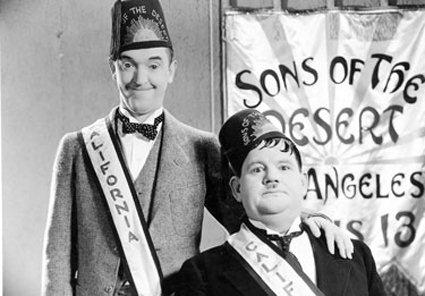A Patchwork Appreciation of Hollywood’s Greatest Comedy Duo
As this photo might explain, it’s probably not surprising that I grew up to regard two bowler hat-wearing, pancake makeup-faced screen clowns as twin comic uncles.
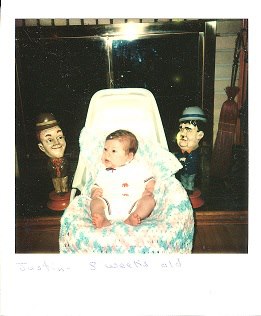
Preceding my own self-awareness as a human being, Laurel and Hardy were always together in big head-replication in the house I grew up in, until, during an ill-advised game of “catch” with my younger brother, poor Ollie was shattered Humpty Dumpty-like into a heaping pile of plaster that simply couldn’t be put back together again. Stannie, however, survived with only his head and nose slightly askew, which fortunately a bit of Elmer’s glue was equal to the task of reassembling. To this day, he continues to sit talisman-like over wherever I happen to park my dresser; noble and brave in his long period of solitude.
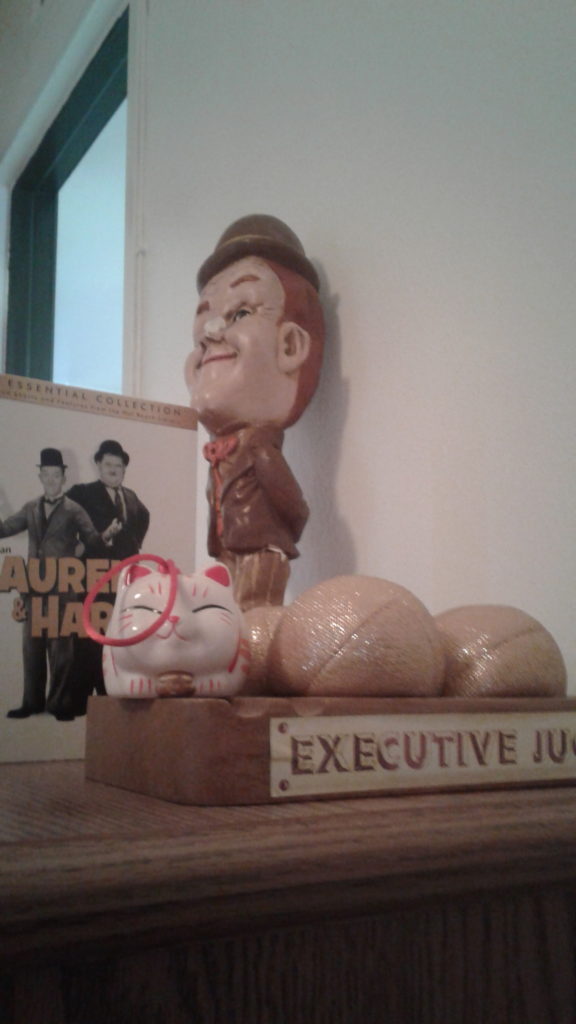
In my own life, then, Stan has been without his Oliver for well over three (and approaching four) decades now, but I still consider them to be together in spirit. Someday I will write my thesis-length appreciation of the pair’s comedy, but until then I’ve assembled a pair of re-runs to at least acknowledge what I’ve come to consider as “their holiday”: April Fool’s Day.
…
Reinforcing my youthful love of their comic likenesses, my grandpa – who always told great stories – had a doozy of a great one about actually having crossed paths with the pair in their comic prime:
Grandpa ‘Meets’ Mr. Laurel & Mr. Hardy
Not a very clear picture, but it’s the best I could find for relaying the plot of the 1930 Laurel & Hardy short, Hog Wild (1930).
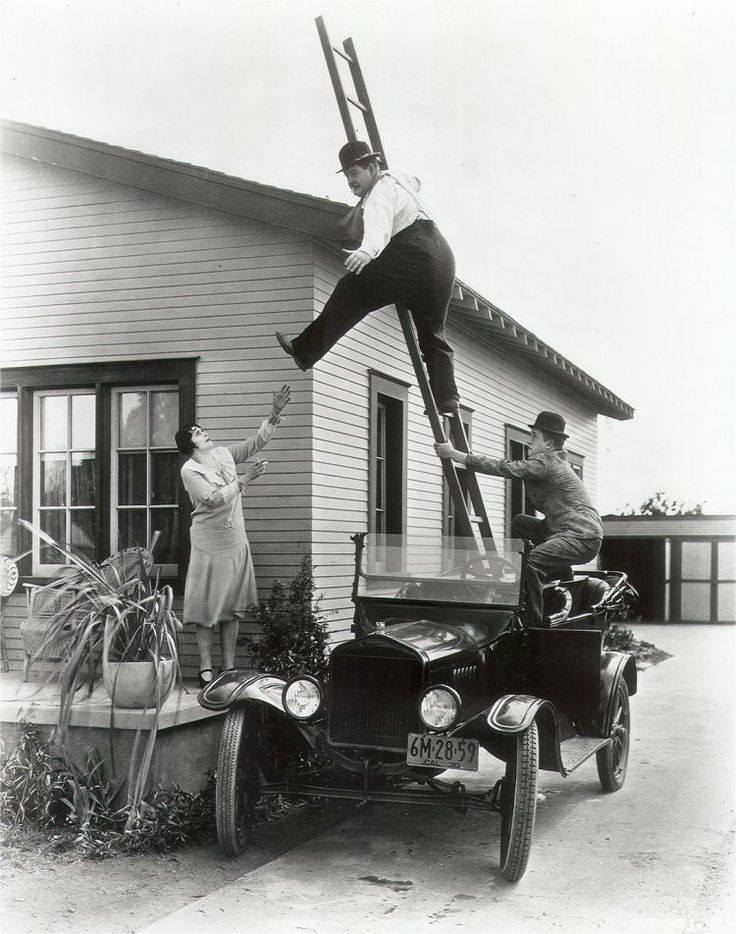
Teetering a-top the ladder is Mr. Hardy. Steadying the ladder from the Model-T Ford below is Mr. Laurel. Providing (nagging) support from the porch off to the side is actress Fay Holderness, playing Mrs. Hardy.
The story goes that Mr. Hardy is attempting to install a radio antenna. “Mrs. Hardy wants to get Japan,” explains Mr. Hardy. Mr. Laurel is providing his usual level of ‘assistance’. Namely, none whatsoever. And like any situation involving Laurel & Hardy, the matter is an exercise in comic futility and frustration. ‘Cause every time Mr. Hardy goes up the roof, he comes down just as quickly.
And lands in this lily pond:
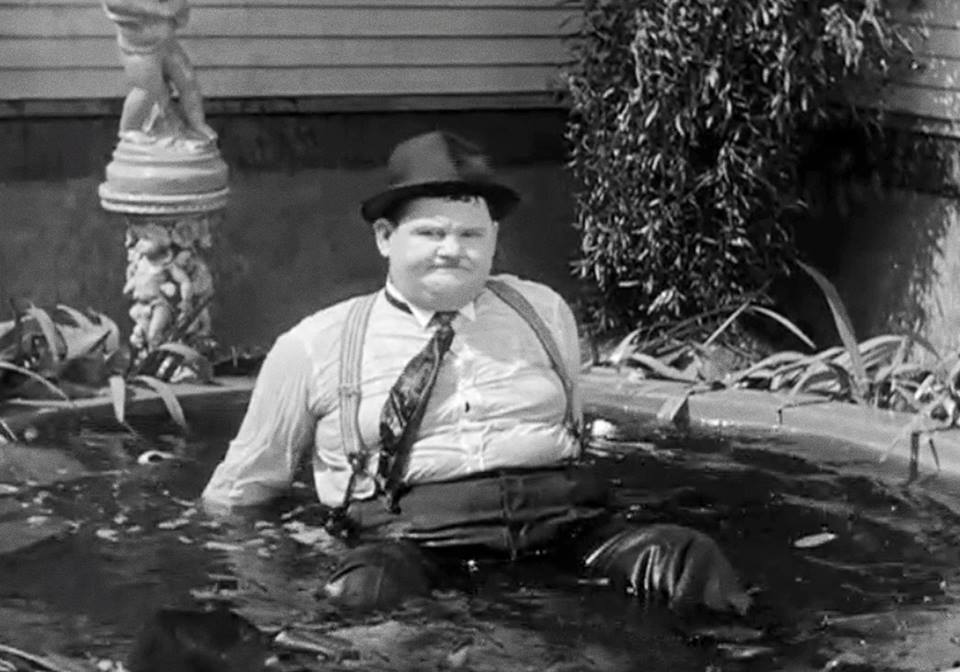
When I was a kid, the local PBS affilliate showed L&H shorts every Sunday afternoon, where I was first introduced to the duo’s deliberate, almost genteel style of comedy, but the L&H features all tend to blend together for me. Nothing against them, mind, I simply have a bad memory. And frankly, the personalities of the performers, along with the comic set-pieces, were always much more important to me than any particular movie. I remember very specific scenes – like L&H trying to push a piano up a long flight of stairs, or selling Christmas Trees during a sunny Californian ‘winter’ – but I can’t remember specific movies.
Or their titles. I may have seen Hog Wild, I may not have. Again, it’s hard to remember specific shorts or their titles. Especially after 20 years. But I do have a slight connection to the above-described L&H short, even though I only discovered that connection recently.
My late grandfather claimed to have seen the filming of a Laurel & Hardy movie. And Grandpa…well, if anyone is, that’s a man who’s worthy of elaboration… But I won’t go into all that now and will simply let this photo speak for itself:
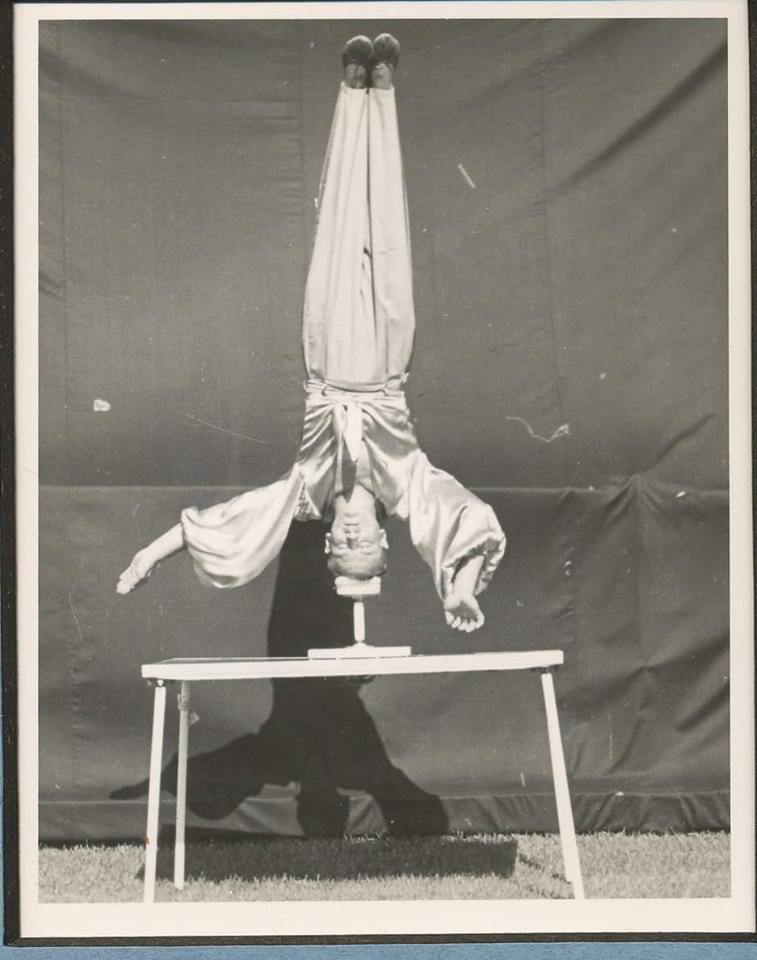
For our purposes, Grandpa lived in Los Angeles from 1929 to 1930. At the time, he attended the mammoth, university-like campus at Manual Arts High School (which was destroyed 3 years later in an earthquake). He played halfback on the football team. (If you were interested.)
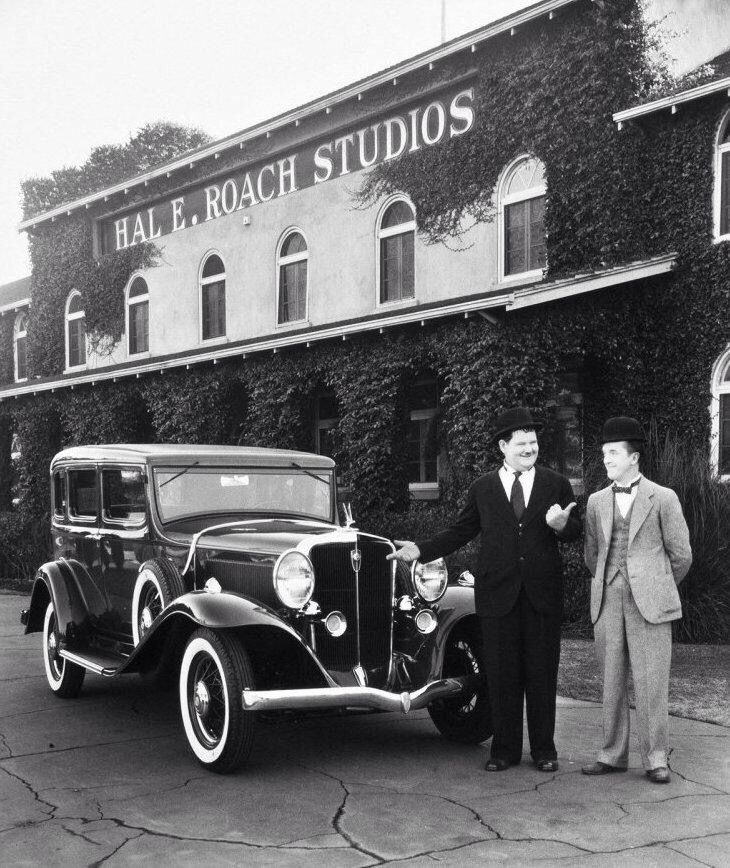
L&H standing in front of Hal Roach Studios; Culver City, California
And for much of that period, his father – a carpenter by trade – worked in Culver City, home of Metro Goldwyn Mayer. Grandpa’s Dad spent most of his time in Culver City working for the great comedy producer, Hal Roach — building sets, presumably. Which means my great-granddad may or may not have, at one time or another, been within spitting distance of the Our Gang kids, Charley Chase, ZaSu Pitts, Harry Langdon, Thelma Todd… among many, many others.
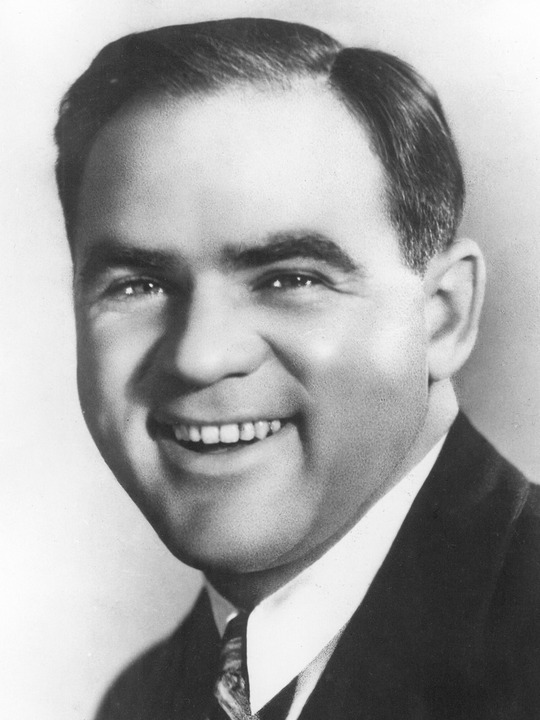
Legendary comedy producer Hal Roach
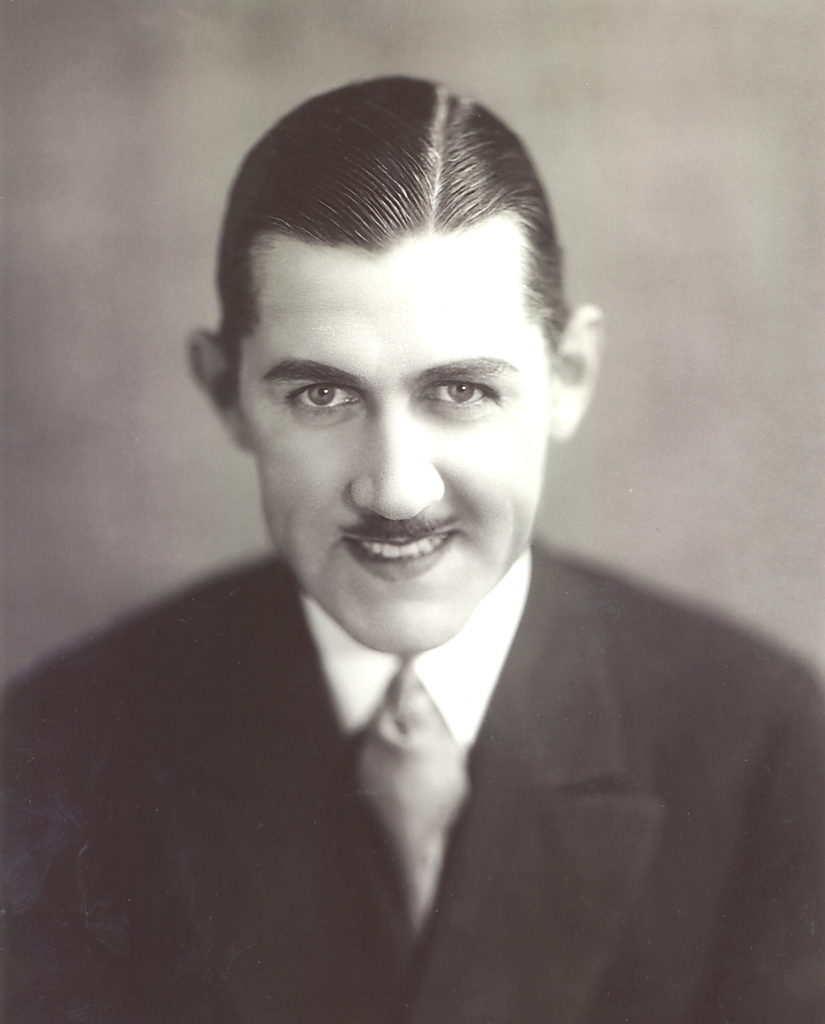
Brash star comedian Charley Chase
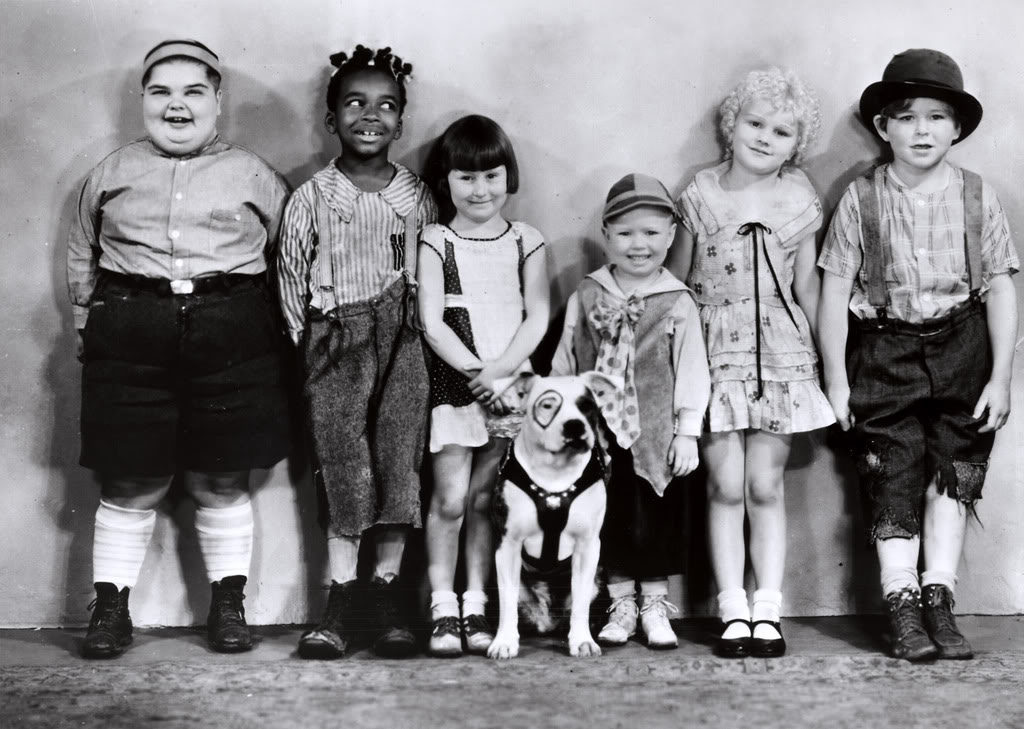
The Our Gang gang, ca. 1930
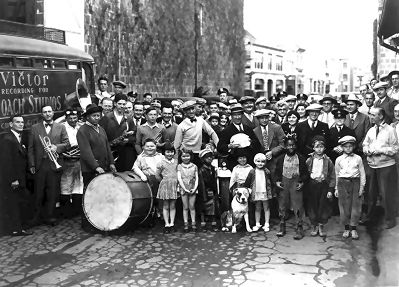
Hal Roach stars and crew in Culver City street, ca. 1930
Including Laurel & Hardy, of course.
One particular day, my grandfather went to work with his dad. Why exactly, I dunno. (Maybe it was ‘bring your kid to work day’.) Anyway, Grandpa said they happened to be filming a Laurel & Hardy movie that day. The ‘set’ was a house in or near the Culver City studio. (Most likely a vacant house rented as a temporary movie set or a makeshift house built on a vacant lot.) Mr. Hardy was up on the roof. Mr. Laurel was resting down below in a folding chair with ‘Mr. Laurel’ written on the back.
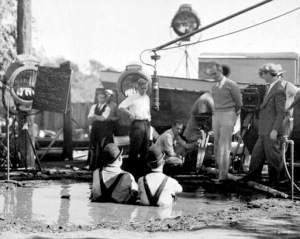
**And according to Grandpa, Laurel ‘entertained’ a comely young Señorita on his lap while, um, ‘resting’.
Though I imagine that that particular detail may have been added later to give color to his tale.
To, y’know, ‘spice things up’ a bit.**
Anyway, the bizarre part regarding this day of filming, Grandpa recalled, was that they shot each scene three times over: first in English, then in French, and finally in Spanish. These foreign language inserts were especially frustrating. Mr. Hardy, who apparently had little experience with foreign languages, had a miserable time with Spanish pronunciation. An interpreter, standing on the ground below, would shout up a line to Mr. Hardy, who would then attempt to replicate the line back, sound for sound. He was learning his lines phonetically. It was a long and arduous process. Each time the camera rolled Mr. Hardy would make a mistake and they’d have to start the scene over.

The shooting was stretching into the early evening. The tension on the set was palpable. Finally, after making his umpteenth error, Mr. Hardy exploded with rage, said something along the shocking likes of, “*&%# it!” (Grandpa, coming from that generation, declined to repeat the ‘oath’ Mr. Hardy then-employed — only saying it was enough to ‘make his ears burn’), and chucked his famous bowler hat out into the distance.. and it evidently vanished, ’cause afterwards no one on-set could find the blasted thing.
So they shut down for the day. To the relief of all-involved, I might imagine.
Now, I don’t know if that story is 100% (or even 1%) true. As I said, Grandpa may have added some details for ‘color’, and added others to embellish out his memories as a ‘story’. But I always wondered if any of it could possibly have occurred.
I remembered a few silent shorts where L&H were up on a building (and found one, it’s called Liberty–released in late 1928) and another where they actually built a house (found that one as well, it’s called The Finishing Touch—released earlier that same year) but, given the time factor and story details, both seemed unlikely candidates.
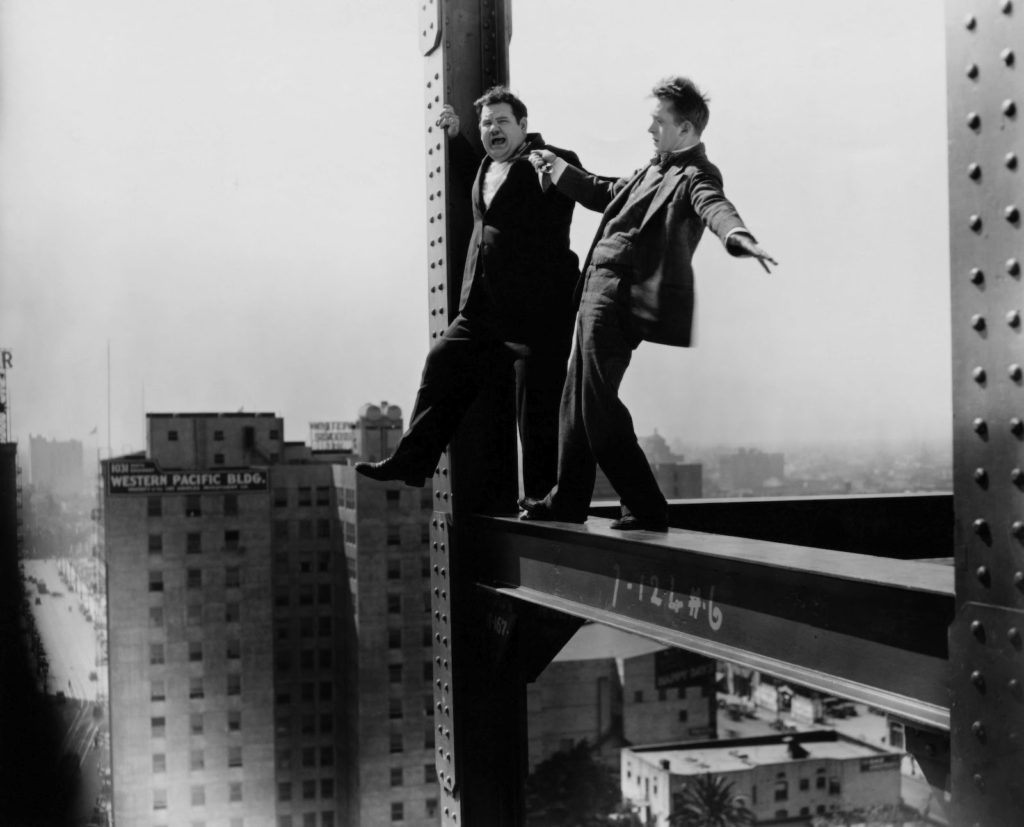
LIBERTY (1929)
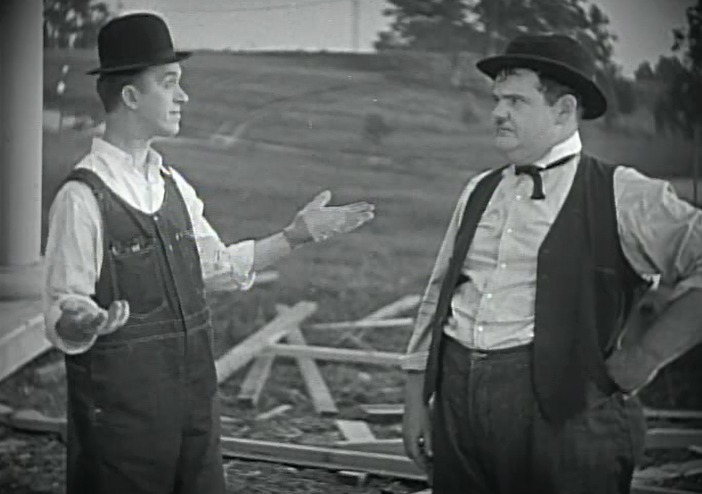
THE FINISHING TOUCH (1928)
So, like any lazy 21st century ‘researcher,’ I turned to the lazy 21st century ‘resource.’
Google.
I narrowed my search to “Laurel & Hardy,” “sound comedy” and “roof top”… and came up with a film released on May 31, 1930 called “Hog Wild.” The IMDB page wasn’t too helpful – beyond containing interesting tidbits regarding the director of the short (James Parrott, brother of Charley Chase), and that the camerman was future Academy-award winning director George Stevens (Shane, Giant, The More the Merrier) – so I checked out the Wikipedia page on the film.

L&H frequent director James Parrott (brother of Charley Chase)
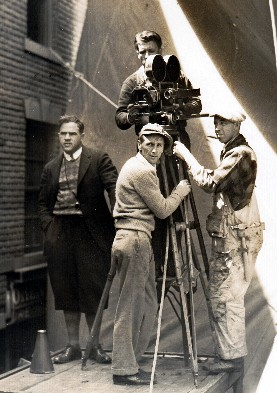
Behind camera, future Academy Award-winning director George Stevens
And yeah, the information there, if it’s accurate, corroborates much of Grandpa’s story:
First, the story details — which check out with Grandpa’s description. Next, the film was made near Hal Roach Studios in Culver City. Time-wise, “Hog Wild” was shot in April 1930, just about the time Grandpa’s Dad was working at the Culver City studio. Finally, the ‘production notes’ mention, specifically, that like other Laurel and Hardy films of this period, Hog Wild was refilmed in both Spanish and French versions in which Laurel and Hardy spoke phonetically the respective languages (Wikipedia).
So maybe it’s not all bulldung?
As for the Señorita, though, I suppose that’s anyone’s guess.
…
As bright a pair of April Fools that ever hung from a drainpipe in their nightshirts during a rainstorm, my last little L&H ditty is a brief, concluding take on what I consider to be their best movie:
SONS OF THE DESERT
(1933, Hal Roach Productions, dir. William A. Seiter)
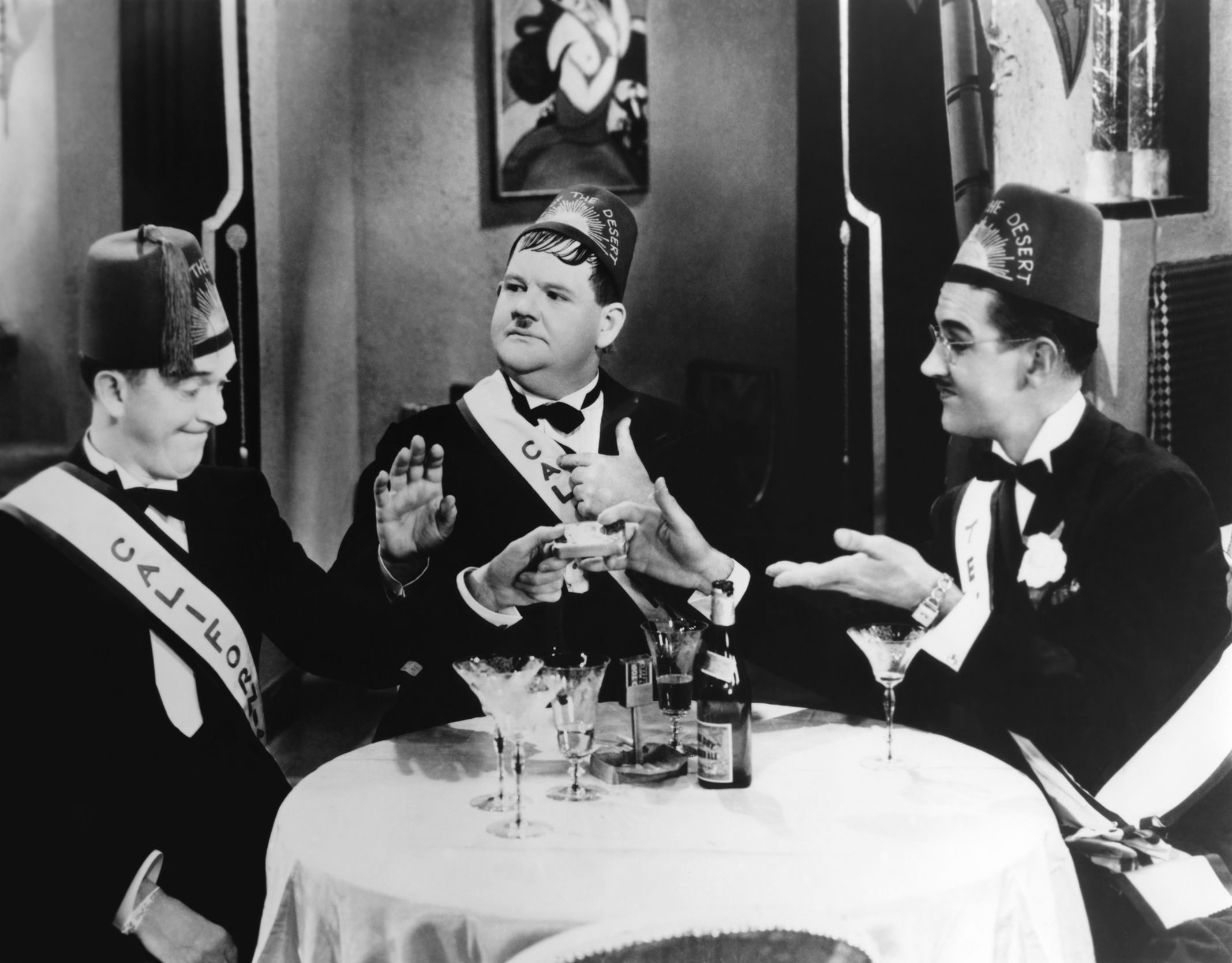
“Honesty is the best politics.” – Stan Laurel
“Well, here’s another nice mess you’ve gotten me into!” – Oliver Hardy
Oh, Stan & Ollie! Two innocents cast adrift in a hostile world without form or meaning, “a circle and a centre not its centre in search of a centre and its circle respectively, in boundless space, in endless time.” But I don’t think we need geometry or physics to explain the universal, timeless appeal of Mr. Laurel & Mr. Hardy: wheree’er they go, trouble is sure to follow…
Here, “The Fellows” (Arthur Stanley Jefferson, Oliver Norvell Hardy) are married conventioneers who belong to a fraternal organization called “The Sons of the Desert.” “The Wives” (Mae Busch, Dorothy Christy), however, aren’t so keen on the raucous goings-on of the Desert Sons and absolutely forbid the boys to attend its annual convention in Chicago. Undeterred, Ollie feigns illness—claiming he needs Stan to accompany him on a health-sustaining journey to, um, ‘Honolulu’—and they head off to Chicago where they join a parade, meet up with a fellow prank-prone lodge brother (Charley Chase; who turns out to be Ollie’s long-lost brother-in-law), and take in a floorshow at a speakeasy (“Honolulu Baby! Where’d ya get those eyes?”).
On their return home, though, things don’t go quite so swimmingly when they learn that their erstwhile ship en route to Honolulu has sunk in a typhoon! Like valkyries shrieking on their heels, the wives soon return from the cinema—where they just happen to have seen a newsreel of the recent Sons of the Desert convention in Chicago, complete with Stan & Ollie mugging for the camera—and the boys flee to the attic in hopes they can wait out the storm, only to find a storm of a more literal sort brewing overhead…

Of all the wonderful comedies Laurel & Hardy made, I think this might be their best. (It’s my favorite, at least.) Stan’s dull witticisms and Ollie’s mugging “take’ems” are as masterful inventions of the 20th century as a Picasso brushstroke or an Art Tatum glissando. The scene, for instance, of Hal Roach’s top three comedians—Stan Laurel, Oliver Hardy, and (the woefully underappreciated) Charley Chase—just sitting around a nightclub table and comically riffing off each other is a glorious bit of nonsense and, if it were only possible, that 3 or 4 minutes of celluloid should have its own wing in the Smithsonian. As should those other 59 or 60 minutes. Superlatives don’t do these performers, or this movie, justice: Mr. Laurel & Mr. Hardy are quite simply America’s patron saints of film comedy.
